Looking for the best hardware wallets to keep your cryptocurrency safe in 2025? This article breaks down the top choices, whether you are a beginner or an advanced user. We cover wallets that offer top security, ease of use, and unique features to meet diverse needs. Trezor and Ledger are the leading brands in hardware wallets, known for their reliability and advanced security features.
Introduction to Cold Wallets
Cold wallets, often referred to as offline wallets, are a cornerstone of secure crypto storage. Unlike hot wallets, which are always connected to the internet, cold wallets keep your private keys offline, dramatically reducing the risk of online hacking attempts. By storing private keys away from internet-connected devices, cold wallets offer maximum security for your digital assets, making them the preferred choice for long-term crypto storage.
These wallets act as a secure vault for your crypto, ensuring that your assets are protected from online threats and unauthorized access. Whether you’re safeguarding Bitcoin or a diverse portfolio of crypto assets, cold wallets provide peace of mind by keeping your private keys and sensitive information offline. For anyone serious about crypto security, cold wallets offer unmatched protection and are an essential part of any robust crypto storage strategy.
Understanding Crypto Security Risks
Crypto security is a top priority for anyone managing digital assets, as the risks can be significant. One of the biggest threats is the loss or theft of private keys—if you lose access to your private keys, you lose access to your crypto assets permanently. Hackers are constantly looking for vulnerabilities in crypto wallets, especially those connected to the internet, making online hacking attempts, phishing attacks, and malware a real danger for hot wallets.
Choosing the right crypto wallet is crucial to protect your assets from these risks. Hardware wallets provide an extra layer of security by keeping private keys offline and out of reach from hackers. By understanding the potential threats and how they can impact your crypto security, you can make informed decisions to keep your assets safe and secure.
What is a Hardware Wallet?
A hardware wallet is a specialized physical device designed to securely store your private keys offline, offering robust protection for your digital assets. Unlike software wallets that may be exposed to online threats, hardware wallets like the Ledger Nano and Trezor Model T use a secure element to keep your private keys safe from hackers and malware. These wallets require physical interaction to authorize transactions, adding an extra layer of security against remote attacks.
These devices ensure that only you have access to your crypto assets, as the private keys never leave the hardware wallet and are never exposed to the internet. This makes hardware wallets one of the most secure options for storing crypto assets, as they are immune to most online hacking attempts. Whether you’re storing Bitcoin or a range of other cryptocurrencies, a hardware wallet provides peace of mind by keeping your keys and assets protected offline.
Key Features of a Secure Wallet
When selecting a secure wallet for your crypto assets, there are several essential features to look for. A hardware wallet should include a secure element for private key storage, ensuring your keys are protected from online threats and unauthorized access. Two-factor authentication adds an extra layer of security, making it harder for hackers to compromise your wallet.
A user-friendly interface is also important, allowing for easy access and management of your assets without sacrificing security. Look for wallets that offer reliable recovery options, so you can restore access to your crypto assets if your device is lost or stolen. Ultimately, a secure wallet combines strong protection, ease of use, and robust recovery features to keep your crypto safe from hackers and other threats.
Hot Wallet vs. Cold Wallet
Choosing between a hot wallet and a cold wallet is a key decision in managing your crypto assets. Hot wallets, such as software wallets, are connected to the internet and provide easy access for frequent transactions. However, this convenience comes with increased exposure to online hacking attempts and other security risks.
Cold wallets, on the other hand, store private keys offline, offering maximum security for your digital assets. By keeping your keys disconnected from the internet, cold wallets are far less vulnerable to cyberattacks, making them ideal for long-term storage. The best approach often depends on your needs: use a hot wallet for everyday transactions and a cold wallet for storing larger amounts of crypto securely. By combining both, you can enjoy the benefits of easy access and robust protection for your assets.
Overview of Top Hardware Wallets for 2025

Finding the ideal hardware wallet can be overwhelming with so many options available. Here’s a quick overview of the top hardware wallets for 2025, each excelling in different areas:
- Best for Beginners: Trezor One
- Best for Advanced Security: Ledger Stax™
- Best for Portability: Tangem Wallet
- Best for Air-Gapped Security: Keystone 3 Pro
- Best Overall: Onekey Pro
- Best for High-Volume Traders: GridPlus Lattice1
- Best for Seedless Security: Cypherock Wallet
Which wallet you choose depends on your needs and preferences—your ideal wallet depends on whether you prioritize convenience, security, or specific features. Be sure to consider these factors before making a purchase.
Best for Beginners: Trezor One
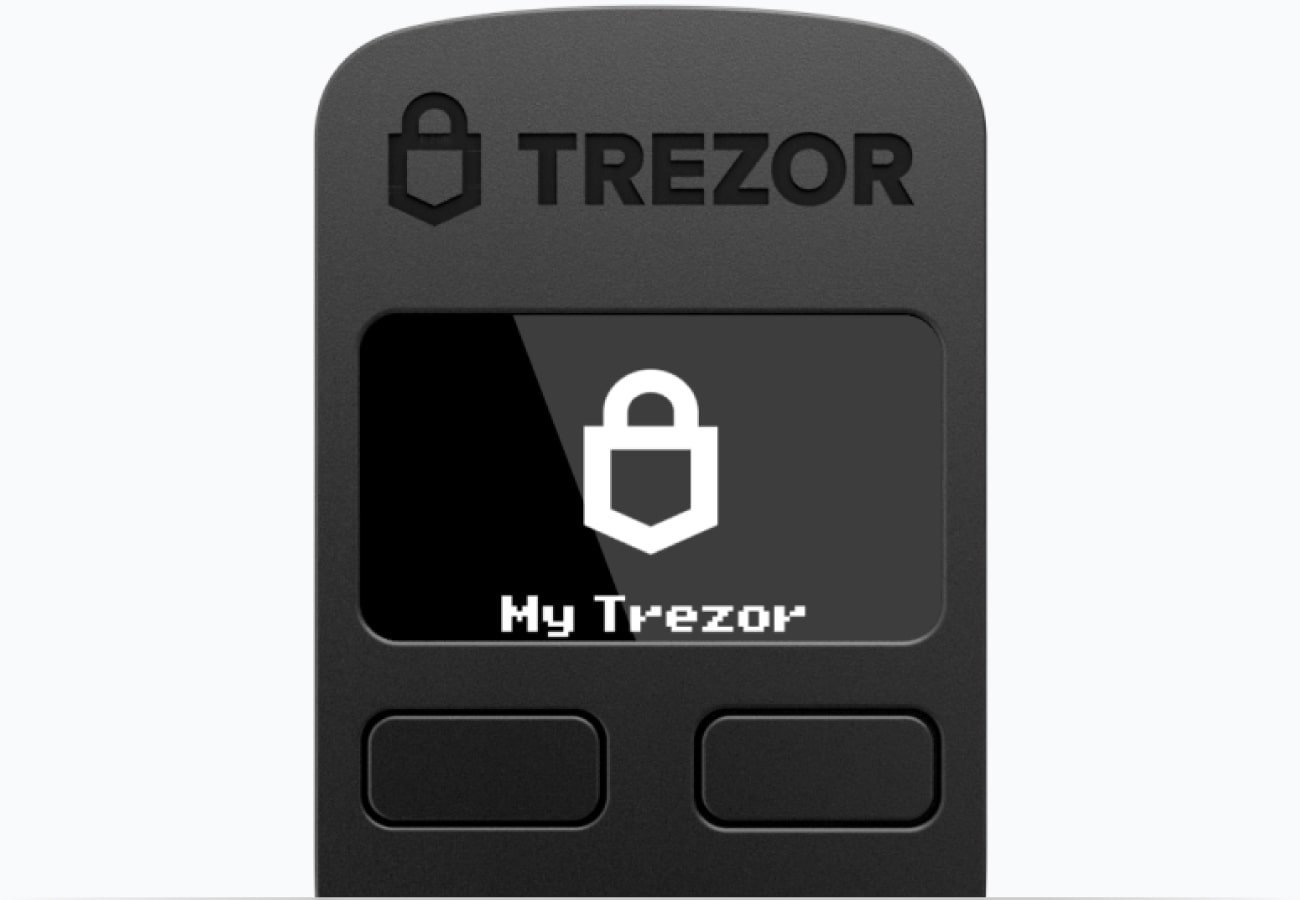
Price: $49
Pros:
- User-friendly interface
- Strong security features
- Easy backup options
Cons:
- Limited advanced features
- May not support as many cryptocurrencies as more advanced models
The Trezor One is the go-to hardware wallet for beginners due to:
- Its intuitive interface that feels as seamless as using a smartphone, making it easy for new users to manage their crypto assets
- PIN protection
- Secure backup options that ensure your investments are safe
You can connect the Trezor One to your computer via USB, allowing you to set up the device, authorize transactions, and manage your crypto assets securely.
Although Trezor One is easy to use, it may lack advanced features sought by experienced users. However, for those just getting started, it offers a perfect balance of simplicity and security.
Rating:
- Price: 4.5/5
- Design: 4/5
- Security: 4/5
- Overall: 4.2/5
Best for Advanced Security: Ledger Stax™
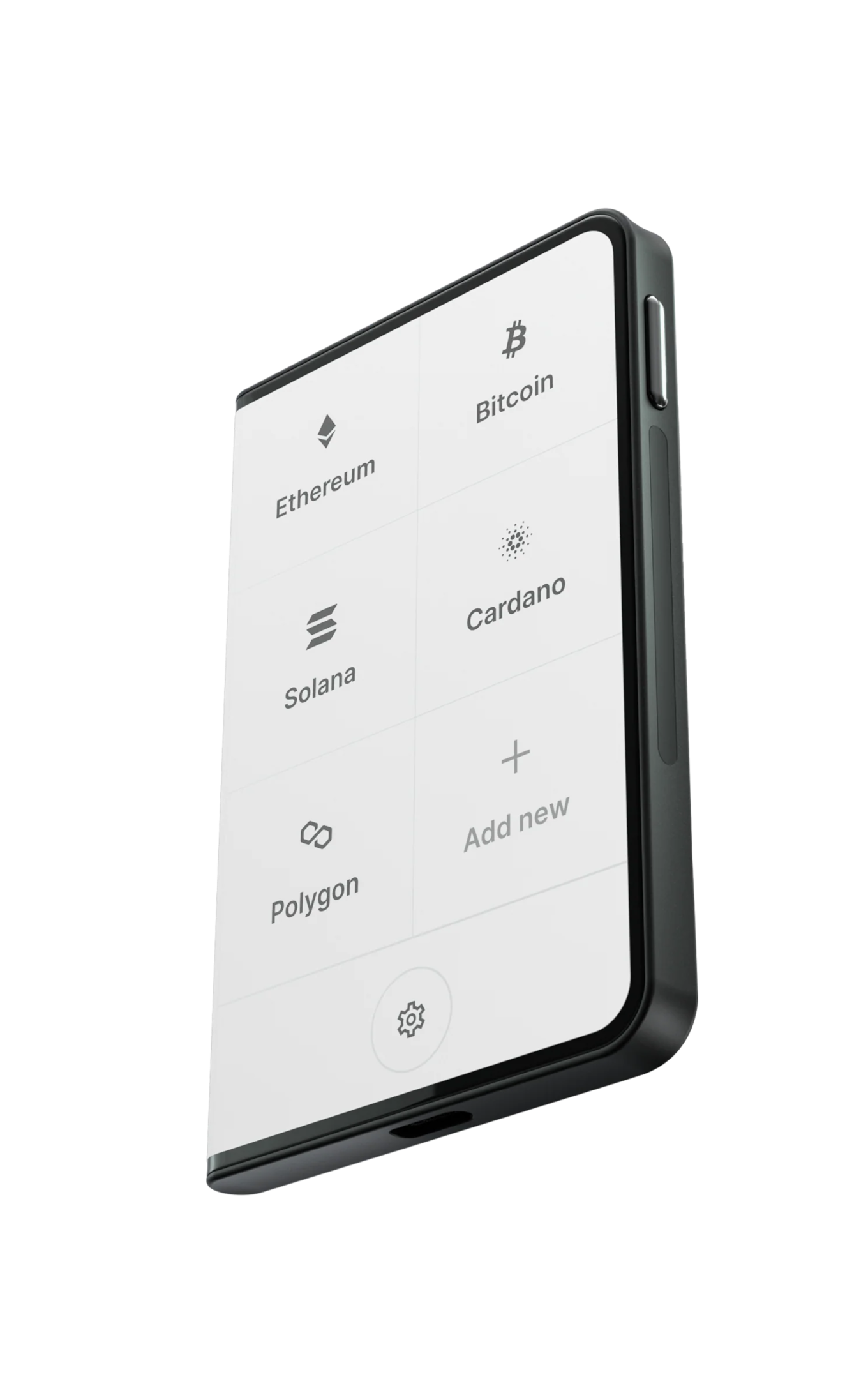
Price: $279
Pros:
- Secure Element chip
- EAL6+ certification
- Supports thousands of coins and tokens
- Bluetooth connectivity and USB-C support
- Touchscreen interface
Cons:
- Higher price point
- May be complex for beginners
The Ledger Stax™ stands out for its unparalleled security features:
- Utilizes a Secure Element chip to protect your assets from both physical and cyber threats.
- Features a dual-environment architecture that isolates sensitive operations, providing top-level security during transactions.
- Holds an EAL6+ certification, bringing bank-level security to your crypto assets.
- Offers Bluetooth connectivity and USB-C support for flexible, cable-free device pairing and fast, secure charging.
- Includes a touchscreen interface for intuitive navigation and secure transaction approval.
While Ledger Stax™ provides top-tier security, its complexity and higher price may deter some users. For users prioritizing security, this wallet is a worthwhile investment.
Rating:
- Price: 3.5/5
- Design: 4/5
- Security: 5/5
- Overall: 4.2/5
Best for Portability: Tangem Wallet
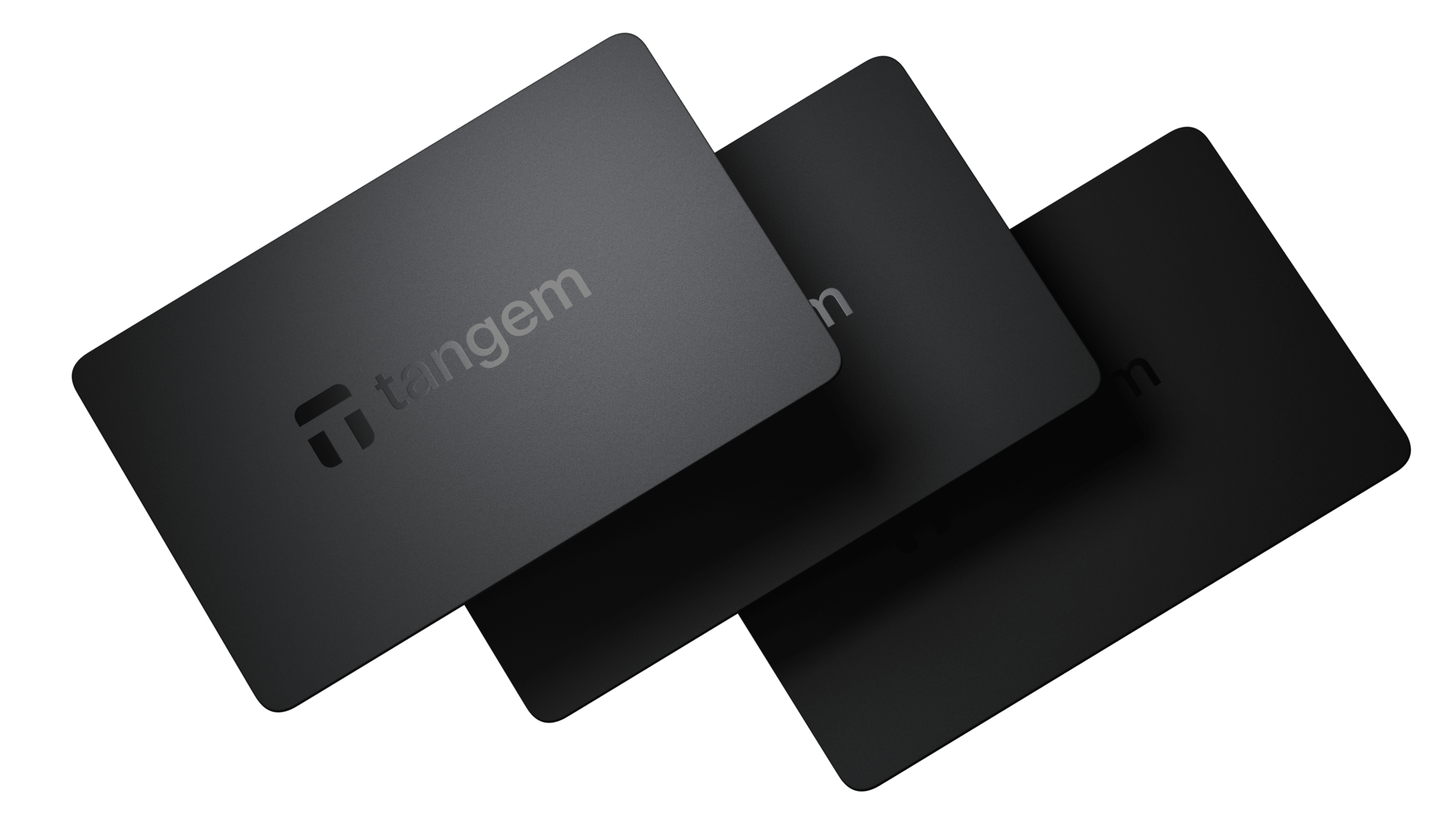
Price: $79
Pros:
- Extremely lightweight
- NFC technology for easy access
- No need for charging
Cons:
- Limited functionalities compared to more advanced wallets
- Dependency on a smartphone for access
Tangem Wallet redefines portability in the world of hardware wallets. Weighing only 6 grams and as thin as a bank card, it fits effortlessly into your pocket. Its tap-to-phone functionality adds a layer of convenience for accessing and managing digital assets on the go, making it an ideal physical device for users to transfer their assets with one wallet. Tangem Wallet simplifies self-custody by allowing users to access their crypto assets directly with a tap, without the need for seed phrases, giving users more control and independence over their funds. Additionally, the Tangem wallet includes biometric security and an access code for enhanced protection.
However, the Tangem Wallet’s simplicity can also be a drawback. It lacks some of the advanced features found in other wallets and relies heavily on a smartphone for access. Despite these limitations, its portability and user-friendliness make it ideal for users needing a wallet they can carry anywhere.
Rating:
- Price: 4.5/5
- Design: 4/5
- Security: 3.5/5
- Overall: 4/5
Best for Air-Gapped Security: Keystone 3 Pro
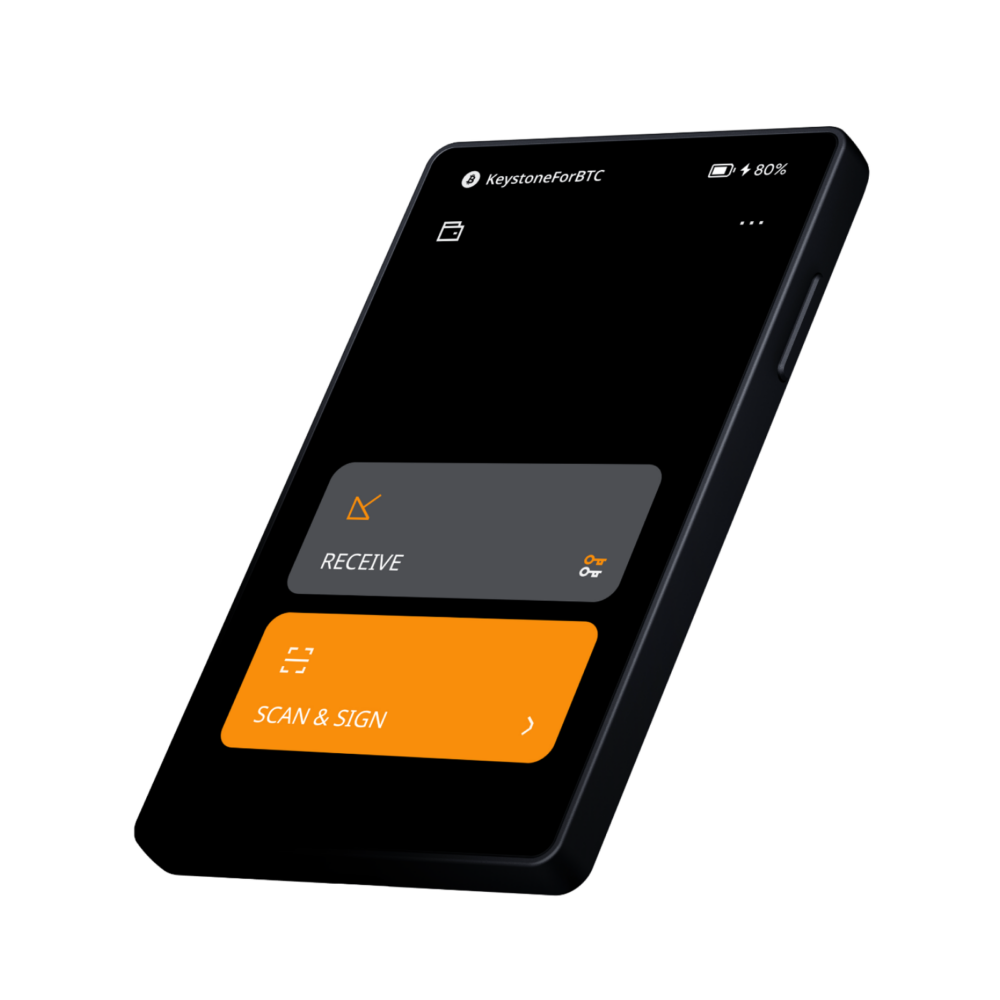
Price: $149
Pros:
- Fully air-gapped
- Anti-tamper technology
- Open-source firmware
Cons:
- Made in China, potential tampering concerns that could lead to compromised quality
- Smaller user base
The Keystone 3 Pro is a fortress for your digital assets, operating entirely offline to eliminate exposure to online threats. Its Air-Gapped Mode uses QR codes and Micro SD cards for secure data transfers, ensuring maximum security. The device securely stores private keys offline, so they are never exposed to internet-connected devices. Additionally, the wallet includes anti-tamper technology that erases internal data if tampered with, keeping private keys offline.
While its security features are impressive, potential buyers should consider the product’s origin and the implications of purchasing electronics from a Chinese manufacturer. Nevertheless, the open-source firmware lets users verify the wallet’s security, making it a verified trusted option for those seeking air-gapped protection.
Rating:
- Price: 4/5
- Design: 4/5
- Security: 4.5/5
- Overall: 4.2/5
Best Overall: Onekey Touch

Price: $249.99
Pros:
- Advanced security features
- User-friendly interface
- Supports multiple cryptocurrencies
Cons:
- Higher price point
- Larger size compared to other wallets
The Onekey Pro is a game-changer in the realm of hardware wallets. It offers:
- A sleek design
- A user-friendly interface for managing multiple cryptocurrencies
- Advanced security measures, including a secure chip and biometric authentication, ensuring that only you have access to your assets.
The Onekey Touch features a responsive touchscreen that provides haptic feedback, making it easier and more intuitive to authorize crypto transactions securely.
Although the Onekey Touch’s price and size might be a drawback for some, its features and usability make it an excellent choice for both new and experienced users.
Rating:
- Price: 4/5
- Design: 4.5/5
- Security: 4.5/5
- Overall: 4.3/5
Best for High-Volume Traders: GridPlus Lattice1
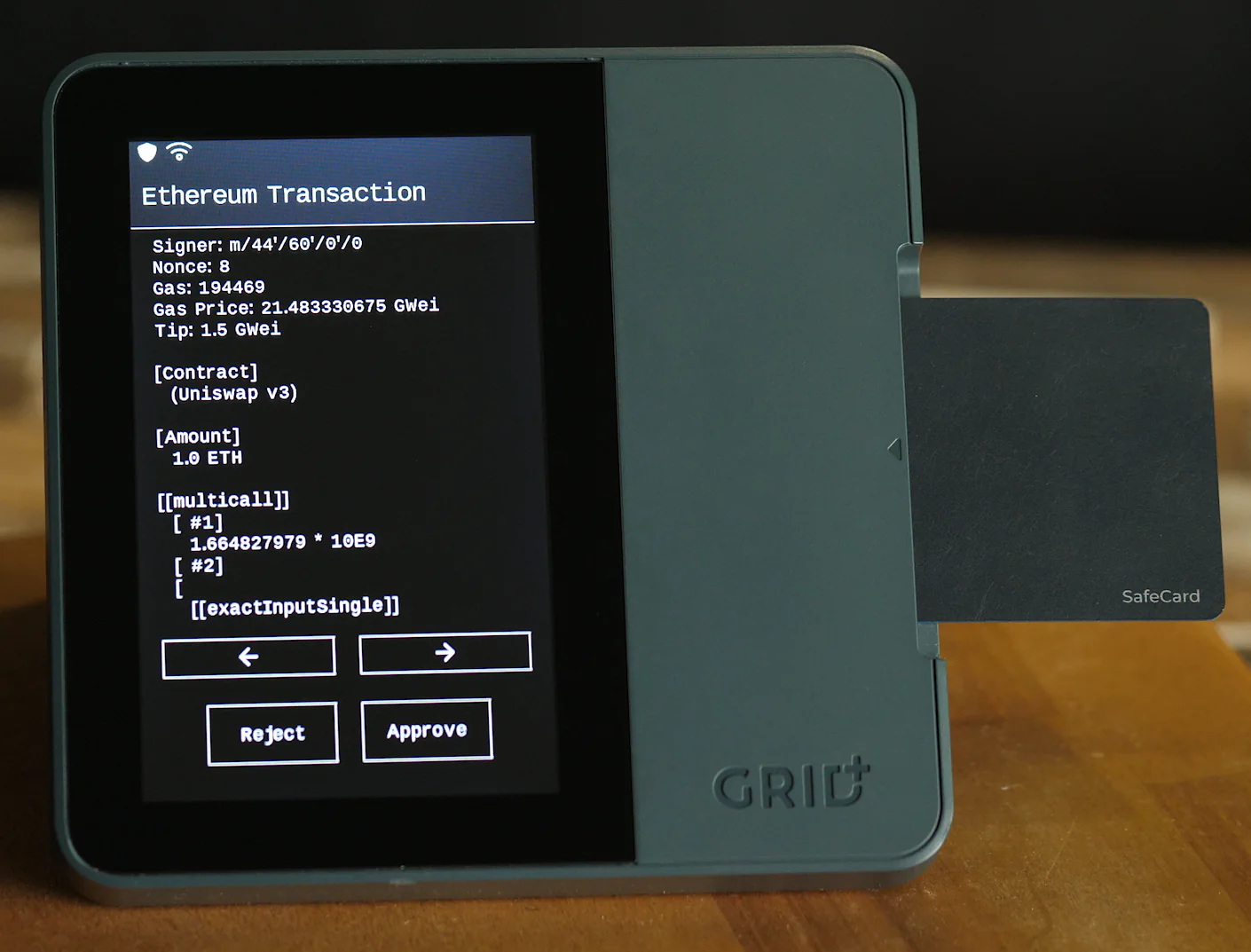
Price: $397
Pros:
- Large touchscreen for easy navigation
- Supports multiple cryptocurrencies
- Secure SafeCard backups
Cons:
- Expensive
- Requires constant power connection
For high-volume traders, the GridPlus Lattice1 is the ultimate hardware wallet. Its features include:
- A large touchscreen that makes managing numerous transactions a breeze and allows users to easily review transaction details and verify the recipient’s address before confirming transfers
- SafeCard backups that offer secure access to multiple wallets
- Support for Bitcoin, Ethereum, ERC-20 tokens, and more, making it versatile for various crypto assets.
This level of functionality comes at a high price. The Lattice1 is among the most expensive hardware wallets and requires a constant power connection, limiting portability. Despite these drawbacks, its features make it ideal for those who frequently manage large volumes of transactions.
Rating:
- Price: 3/5
- Design: 4/5
- Security: 4.5/5
- Overall: 3.8/5
Best for Seedless Security: Cypherock Wallet
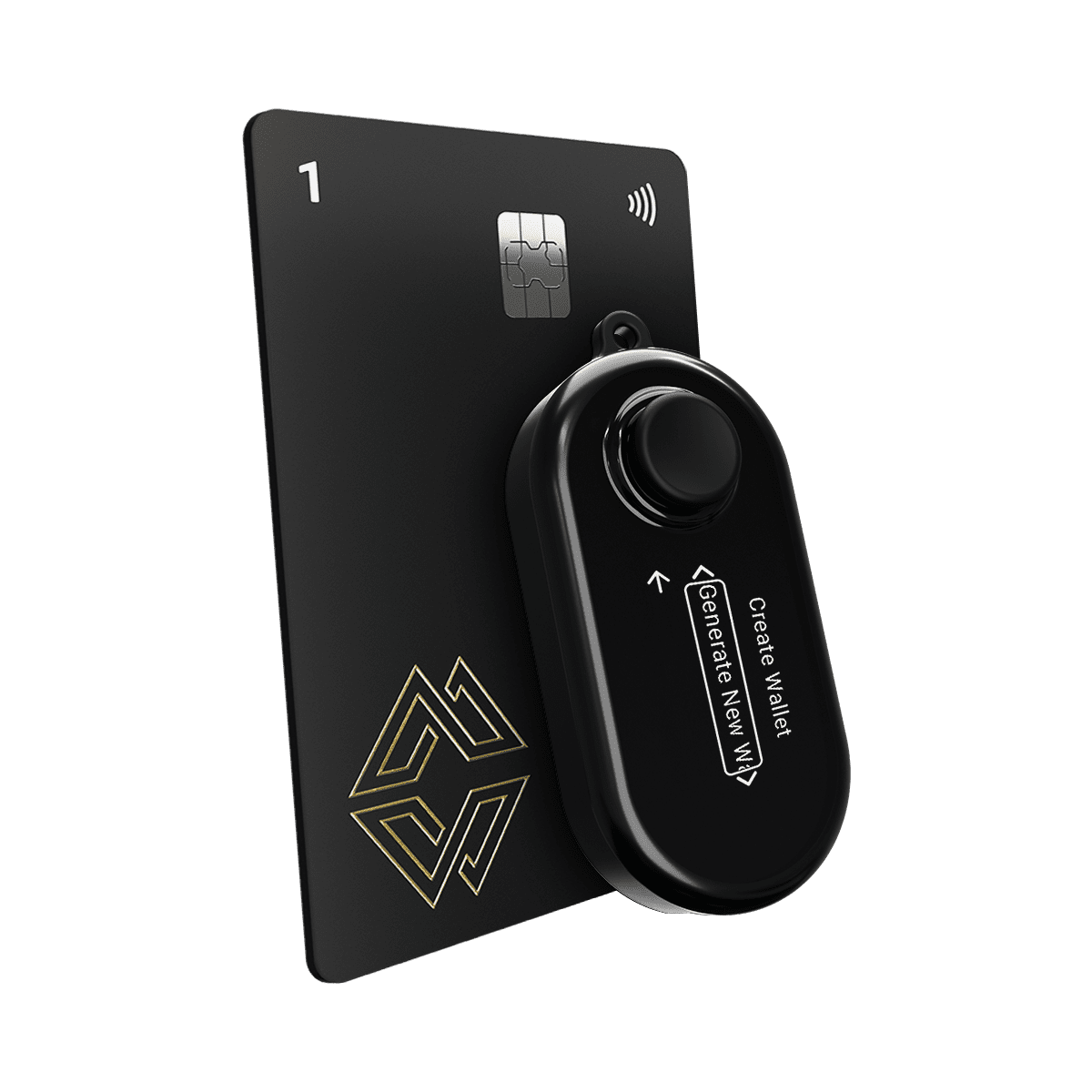
Price: $159 (1x X1 Vault, 4x X1 Cards, hard case)
Pros:
- No seed phrase vulnerability
- Multi-wallet support
- Open-source and audited
- For secure, durable backup of recovery phrases, consider the Bill Fodl review
Cons:
- Plastic casing
- No mobile app
The Cypherock crypto wallet takes a unique approach to crypto security by eliminating the traditional seed phrase. Instead, it splits the private key across four encrypted NFC cards and a vault, enhancing security. This seedless architecture ensures that losing a single card does not compromise access to your funds, utilizing both private and public keys for added protection. Cypherock is also an open-source wallet that incorporates a unique card-tapping system for transaction authorization, providing an innovative and secure user experience.
While the Cypherock Wallet’s innovative design is a major plus, its plastic casing and lack of a mobile app may not appeal to everyone. Despite these minor drawbacks, its advanced security features make it an excellent choice for those who prioritize maximum security.
Rating:
- Price: 4/5
- Design: 3.5/5
- Security: 4.5/5
- Overall: 4/5
How to Choose the Best Hardware Wallet for Your Needs

Choosing the right hardware wallet can feel daunting, but focusing on a few key aspects can simplify the process. Security features should be your top priority. Look for wallets that offer two-factor authentication, secure recovery options, and multi-signature support to protect your assets.
Ease of use is another crucial factor. Wallets with user-friendly interfaces and straightforward recovery options ensure a smooth experience, especially for beginners. Additionally, consider the wallet’s compatibility with various cryptocurrencies to meet your specific investment needs. You should also consider how easily you can connect the wallet to your devices and manage different types of crypto assets.
Finally, identify your specific requirements, such as portability or advanced security, to select a hardware device that best fits your lifestyle. Evaluating these factors will help you select a hardware wallet that suits your needs and offers strong protection for your digital assets.
Summary
Navigating the world of hardware wallets can be overwhelming, but understanding the unique features of each option makes it easier to find the perfect fit. From the user-friendly Trezor One for beginners to the highly secure Ledger Stax™, the versatile Onekey Pro, and the SecuX W20, there’s a hardware wallet suited for every type of crypto enthusiast. As you embark on your cryptocurrency journey, choose a wallet that aligns with your security needs and lifestyle to keep your digital assets safe and accessible.
Frequently Asked Questions
What makes the Trezor One ideal for beginners?
The Trezor One is ideal for beginners due to its user-friendly interface and robust security features, allowing new users to manage their crypto assets with ease and confidence.
Why is the Ledger Stax™ considered the best for advanced security?
The Ledger Stax™ is regarded as the best for advanced security due to its use of a Secure Element chip and adherence to EAL6+ certification standards, ensuring optimal protection for your stored assets.
What are the unique features of the Tangem Wallet?
The Tangem Wallet is uniquely lightweight and utilizes NFC technology for seamless access, providing an efficient solution for managing digital assets on the go. Its design caters to convenience and mobility, making it an ideal choice for users.
How does the Keystone 3 Pro ensure maximum security?
The Keystone 3 Pro ensures maximum security by operating offline in Air-Gapped Mode and utilizing QR codes and Micro SD cards for secure data transfers, alongside anti-tamper technology to protect sensitive information. It also connects to MetaMask using a QR code system, making it a versatile choice for users who need seamless integration with popular crypto platforms.
What is the advantage of the Cypherock Wallet's seedless architecture?
The Cypherock Wallet’s seedless architecture enhances security by distributing the private key across multiple encrypted NFC cards, minimizing the risk of losing access to your funds. This innovative approach offers a more secure alternative to traditional seed phrases.
